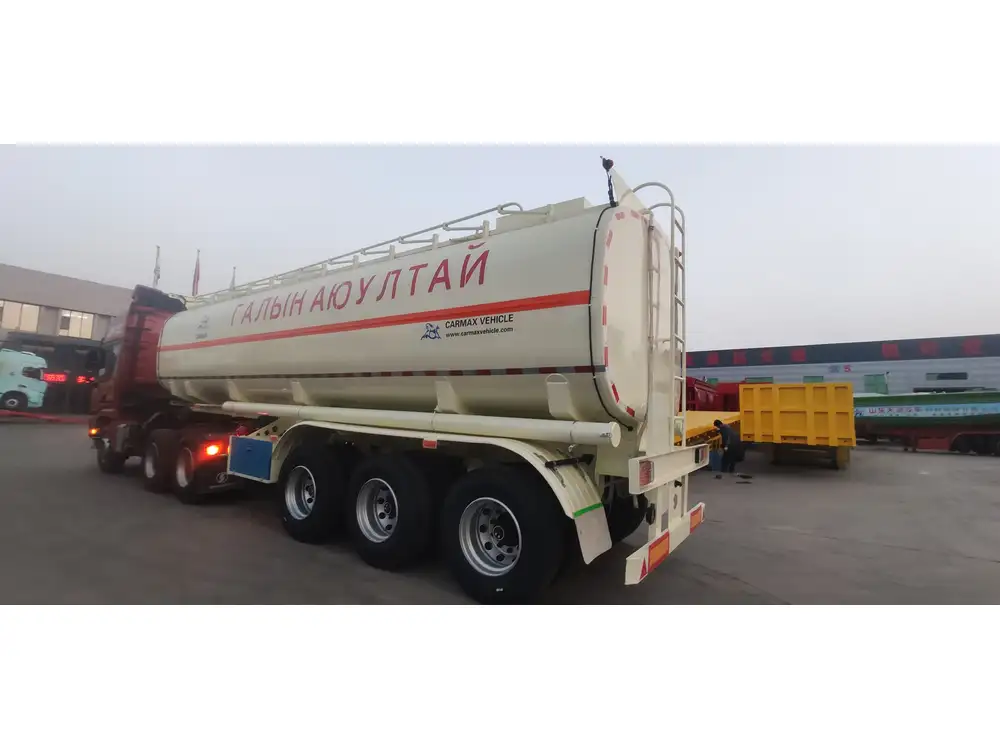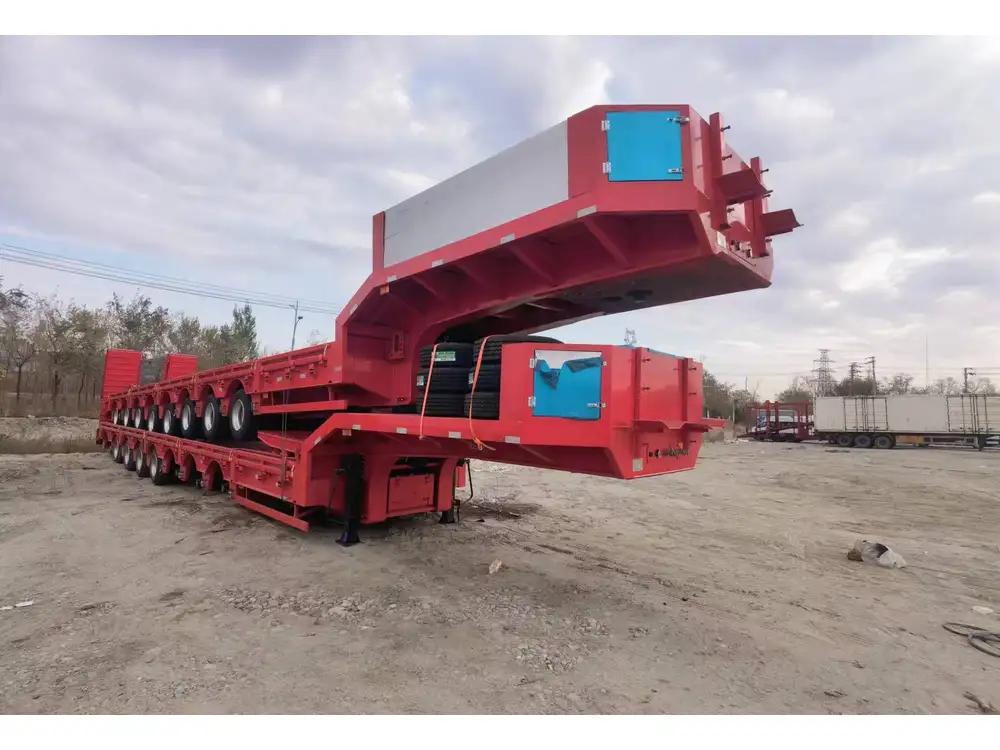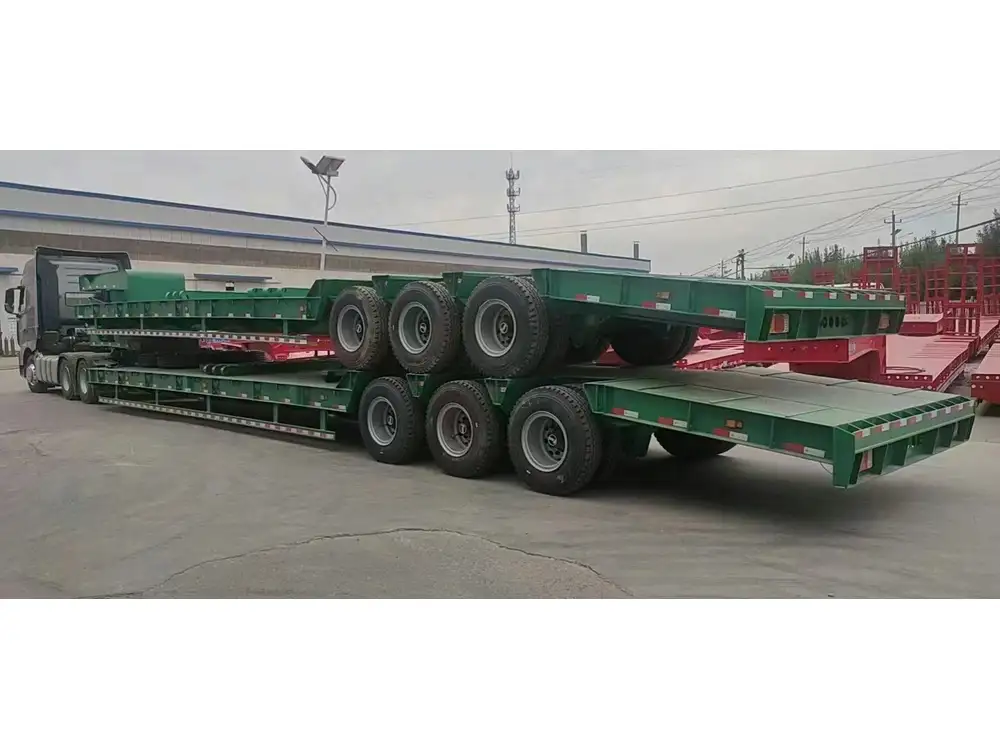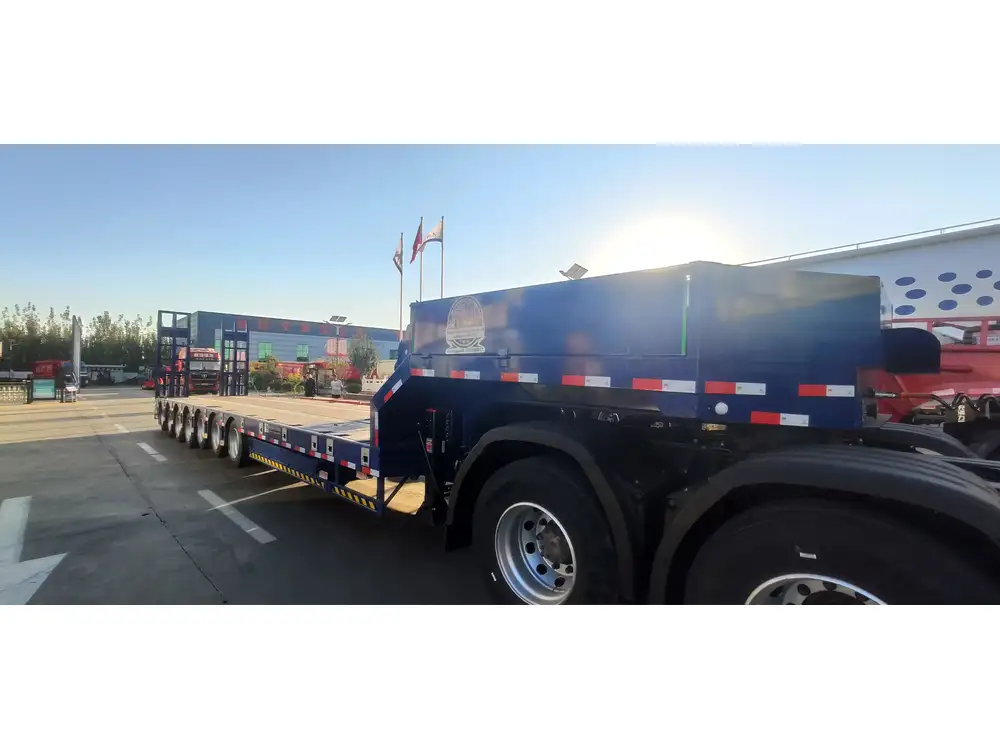In the expansive domain of transportation and logistics, comprehending the dimensions of standard semi-trailers is critical for achieving optimal efficiency, safety, and regulatory compliance. This comprehensive guide delves into the specifics of standard semi-trailer lengths, the factors influencing their dimensions, and the implications for drivers and fleet managers alike.
The Standard Length of Semi-Trailers: An Overview
What Is the Standard Length of a Semi-Trailer?
The typical length of a semi-trailer in the United States is approximately 53 feet. This figure represents the maximum allowed length without permits on most highways, though various configurations may yield different total lengths. In conjunction with the tractor unit, which generally measures around 20 to 30 feet, the overall combination can span 70 to 80 feet. However, it’s worth noting that these lengths may vary based on the specific type of trailer in use and regional regulations.

Trailer Type Length Comparisons
| Trailer Type | Standard Length | Notes |
|---|---|---|
| Flatbed Trailer | Up to 53 feet | Versatile for shipping various cargo |
| Refrigerated Trailer | 53 feet | Designed for transporting temperature-sensitive goods |
| Enclosed Trailer | 48 or 53 feet | Offers protection for valuable cargo |
| Lowboy Trailer | 28 to 48 feet | Designed for heavy equipment transport |
| Container Chassis | Typically 20 or 40 feet | Match ISO containers for international shipping |
Legal Requirements and Regulations
Federal and State Regulations
Understanding the legal framework surrounding semi-trailer lengths is paramount. The Federal Highway Administration (FHWA) regulates the maximum lengths for trucks and trailers operating on interstate highways. While the federal maximum for a trailer is 53 feet, individual states may impose their own regulations affecting the permissible lengths based on local needs and infrastructure.
For instance, in California, while the standard length remains at 53 feet, double trailers may have a combined length of up to 61 feet. These nuances often necessitate a thorough understanding of both state and federal guidelines to avoid costly fines and operational disruptions.

Permits for Overlength Trailers
In instances where loads exceed the standard trailer length, special permits may be required. Obtaining these permits usually requires providing specific details about the load, its route, and any potential hazards associated with transporting oversized goods.
Safety Considerations
Longer trailers, while useful for maximizing cargo capacity, introduce various safety concerns. The increased length can impact maneuverability, requiring drivers to exercise heightened caution when navigating sharp turns, intersections, and encroaching on space around other vehicles.
Factors Influencing Semi-Trailer Dimensions

Type of Cargo
The nature of the cargo dictates the choice of trailer and its dimensions. High cubic capacity trailers may be ideal for bulk materials, while specialized trailers cater to specific needs such as transporting vehicles, delicate machinery, or open-top cargo.
Equipment Specifications
Each trailer type is designed with specific dimensions aligned with its intended use. The Federal Motor Carrier Safety Administration (FMCSA) mandates specific height and width limits to promote safety and efficiency in transportation.
Technological Advancements
Advancements in trailer design, such as the introduction of extendable trailers or hydraulic systems for varying loads, have reshaped the landscape of transportation. These innovations allow for better adaptability to varying cargo dimensions while optimizing overall travel efficiency.

Common Questions Regarding Semi-Trailer Dimensions
How Does Width and Height Affect Storage Capacity?
While the standard length of a semi-trailer is crucial, width and height also play significant roles. Semi-trailers generally have a maximum width of 8.5 feet and a height of 13.5 feet. This creates a volumetric capacity that must be considered when planning shipments.
What Are the Differences in Length for Different Transport Scenarios?
- Local Deliveries: Often utilize shorter trailers (e.g., 48 feet) due to urban or tight loading locations.
- Long-Distance Hauling: Maximize the standard 53 feet for efficiency.
- Specialty Transport: Lowboy trailers for moving heavy machinery range from 28 to 48 feet.

Implications for Fleet Management
Understanding trailer dimensions is critical for fleet managers, as these metrics directly impact logistics, transport capacity, and costs.
Maximizing Load Efficiency
Efficient loading practices hinge upon understanding the precise dimensions of trailers. This allows for optimization of space, ensuring maximum freight loads while maintaining safety and regulatory compliance.
Cost Assessment
Larger trailers may increase fuel consumption, while smaller configurations can lead to more trips and potentially increased operational costs. Hence, understanding the trade-offs associated with trailer lengths can guide better business decisions.

Route Planning
Fleet managers must also consider trailer length when plotting routes, as specific roadways may have restrictions based on bridge heights, road width, and turning radius. Utilizing a route optimization tool can mitigate delays and enhance timely deliveries.
Conclusion
In conclusion, grasping the fundamentals of semi-trailer dimensions transcends mere knowledge; it is foundational for logistics, regulatory compliance, and operational efficiency within the transportation sector. With standard lengths predominantly at 53 feet, semi-trailer configurations open a multitude of opportunities that require thoughtful consideration from manufacturers to fleet operators.
By aligning our operational strategies with these insights—across legal dimensions, practical loading capacities, and the implications for route planning—stakeholders can sharpen their competitive edge in the ever-evolving landscape of freight transportation. Understanding how long a standard semi and trailer is not merely a question of numbers, but a comprehensive strategy that influences myriad aspects of operational efficiency and compliance in the thriving industry of logistics.



